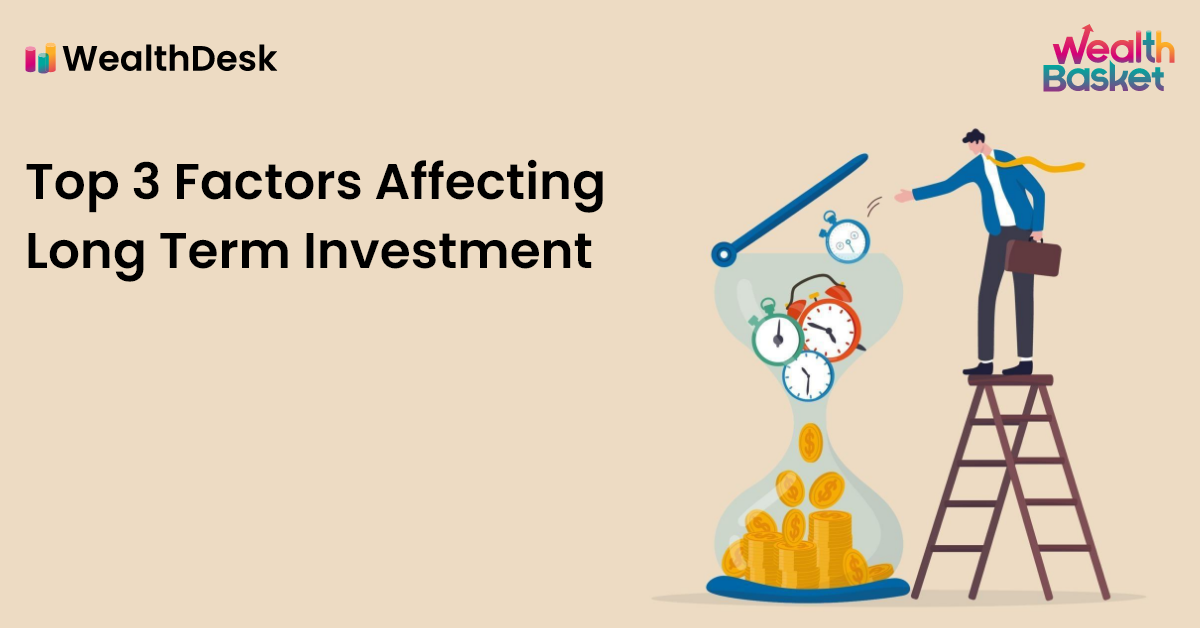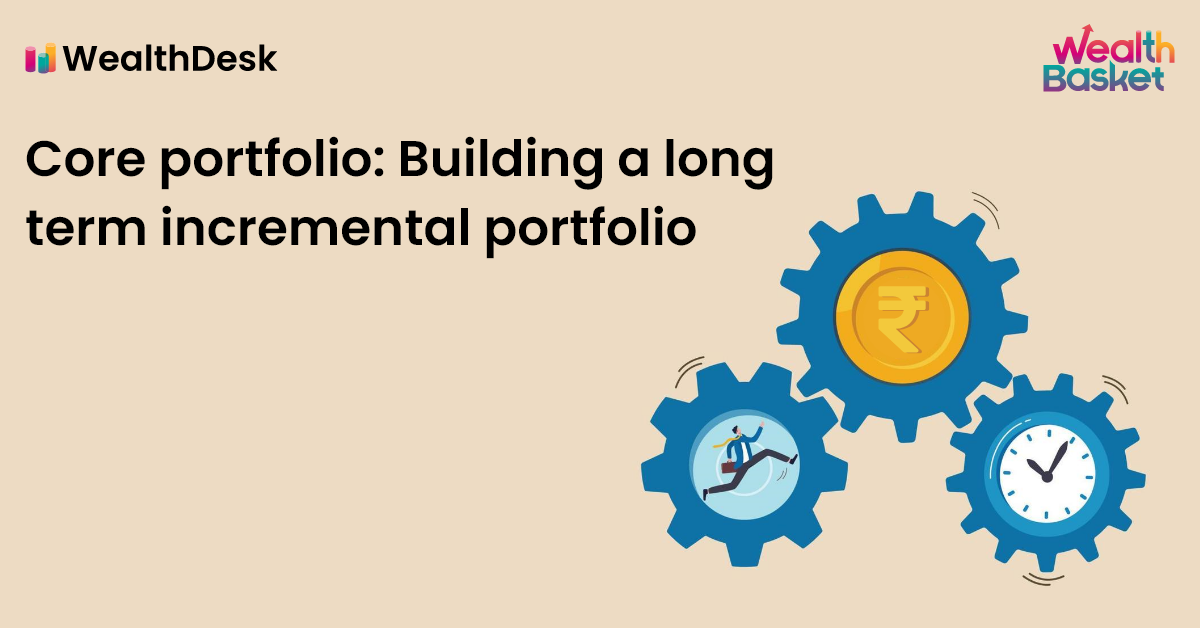Making the investments work for yourself is never an easy job. Be it either a beginner or an expert trader; investment decisions are challenging for both. One of the most valuable factors to making a good long-term investment is portfolio diversification. There are other factors, too, that can help to make a fruitful long-term investment.
This blog will focus on the top 3 factors affecting a long-term investment and various long-term investment strategies to build a robust portfolio.
Factors Affecting Investment
There are multiple reasons you can opt for long term investments. The primary reason is wealth accumulation from the link between volatility and time. Long-term investors are likely to survive market downturns while getting rich dividends and tax benefits.
Nevertheless, there are factors affecting these investments. They are as follows:
1. Return on Investment
A clear investment objective before making investment decisions could help earn maximum returns. The investment could be for the ultimate goal of a property purchase, children’s education and marriage, or retirement planning etc. an investor may also have a short-term plan, like to save for a foreign trip or buy a car.
2. Risk Bearing Ability
A young investor has a higher ability to bear risks and can benefit from long-term compounding. If the investor does not have a financial need arising in the near term, investing in the stock market may be a good option. Before investing, all investors should remember the general guideline for better investing — greater risk, higher reward.
3. Timeline
The time horizon of the investments plays a crucial role in determining how well you will receive the returns from those investments. For example, if you stay invested in shares of a large corporation for a more extended period, you are expected to reap stable returns from those shares.
Discover stocks that suit certain filter criteria and dive into details to check their WealthBaskets.
Long Term Investment Strategies
Buying and selling investments are expensive because every entry/exit of the investments involves cost. Investors must pay capital gains on the sale of certain assets. We will examine four typical investment techniques that are suitable for the majority of investors.
You can pick one that’s right for you by evaluating your investment goals, risk appetite, and the period for which you wish to continue investing.
Dividend Investing Strategy
Dividend investing strategy aims to invest in companies offering stable dividends. The fair value analysis can help you build a portfolio with better values and favorable upside potential while earning a sizeable dividend yield. A dividend investing strategy for long-term outperformance could be the best strategy if your focus is to grow wealth by investing in large corporations offering huge dividends.
Investing in long-term investments with the lowest risk of default lowers the likelihood of future dividend cutbacks. Forward-looking assessments of a company’s present valuation and financial health are critical to the long-term viability of dividend pay-outs and growth potential.
Apart from picking firms with a high dividend yield, this assessment helps you find the right companies that predict a sustainable future.
Diversification Strategy
Diversification is a portfolio-building technique that includes a wide range of investments. Diversify your portfolio’s holdings across asset classes and within asset classes. The notion is that one section of a portfolio’s excellent performance will offset the drawbacks in another section.
Diversification not only reduces portfolio risk but may also improve performance in the near term. It aims to smooth out unsystematic risk occurrences in a portfolio by ensuring that certain assets’ excellent performance balances the others’ negative performance.
The below information will help you understand how portfolio diversification works.
Portfolio Diversification – How it Works?
While investing in stocks is beneficial, this does not imply you should put all of your money in a single stock or industry. The same is true for your fixed deposits, mutual fund units, and gold investments. You can diversify your portfolio with these simple steps:
- Identify your investment goals, risk appetite, and period of investment.
- Determine which proportion of the asset allocation will be suitable for you. (30% equity:70% debt, or any other combination including other asset classes).
- Pick the desired investment instruments and spread them across asset classes and different sectors.
- Re-balance portfolio regularly, but not frequently.
Strategic Asset Allocation Portfolio
One of the most promising choices for long-term investors is strategically allocating the assets across the portfolio. A portfolio approach by which you establish target proportions for multiple asset classes is known as strategic asset allocation.
You can achieve a rebalance in your portfolio when the original allocations diverge sufficiently from the initial settings due to different results. While there is no clear strategy that will work well for every investor, you can follow the ‘diversify as much as you can’ approach to see better results of the portfolio’s strategic asset allocation.
Long Term Investment Options
Below are some of the long-term investment options for you to consider:
- Stocks—Expected growth of Nifty 50 by 17% in 2021-22, to ~78% by 2025, from Jan-22 levels.
- Mutual Funds—Investing in large-cap and mid-cap may yield positive results in 2022.
- Exchange-Traded Funds— inflows into exchange-traded funds (ETFs) are expected to surpass 2021’s record-high.
- Property—India’s residential real estate sector might experience a 5% increase in value in 2022.
- Gold and Bullion—better performance by silver than gold in 4 out of 10 years (FY10 to FY20)
Taxation on Long Term Investment Options
Long-term investments may provide you the capital gains or losses, depending on the price you sell them. The long-term capital gain tax rate varies depending on which instrument you sell.
For example, long-term capital gain (gain generated after holding the units for 36 months) from the gold ETFs is taxed at 20% with indexation benefit. Similarly, long-term capital gain (gain generated after holding units for more than 12 months) from sectoral or index ETFs are charged at a 10% tax rate without indexation benefit.
Hence, you need to evaluate the tax consequences of different investment instruments separately.
Final Thoughts
While selecting the strategy, you should focus on all three factors affecting long-term investments. The long-term investment strategy that worked well for you may not work the best for others. Hence, it is wise to consider every aspect affecting your investment decision. At WealthDesk, you can select your long-term investment portfolio, called WealthBaskets, designed by SEBI-approved investment professionals. These WealthBaskets consist of stocks or ETFs reflecting an investment strategy or theme.
FAQs
Well-diversified ETFs, long-term stocks, and government bonds are among the most acceptable investing options for 2022. Alternative assets such as commodities and cryptocurrencies may be attractive to investors who are willing to take on more risk in the future years.
Long-term investments generally reduce the risk of market volatility and offer stable returns that sometimes are higher than the short-term returns. Investing for the long term caters to your purpose of wealth creation.
Long-term investments may block your funds since specific instruments have a lock-in period. It generates returns slower than the short-term returns. Hence, if you want quick returns, you may prefer investing in other options.


















